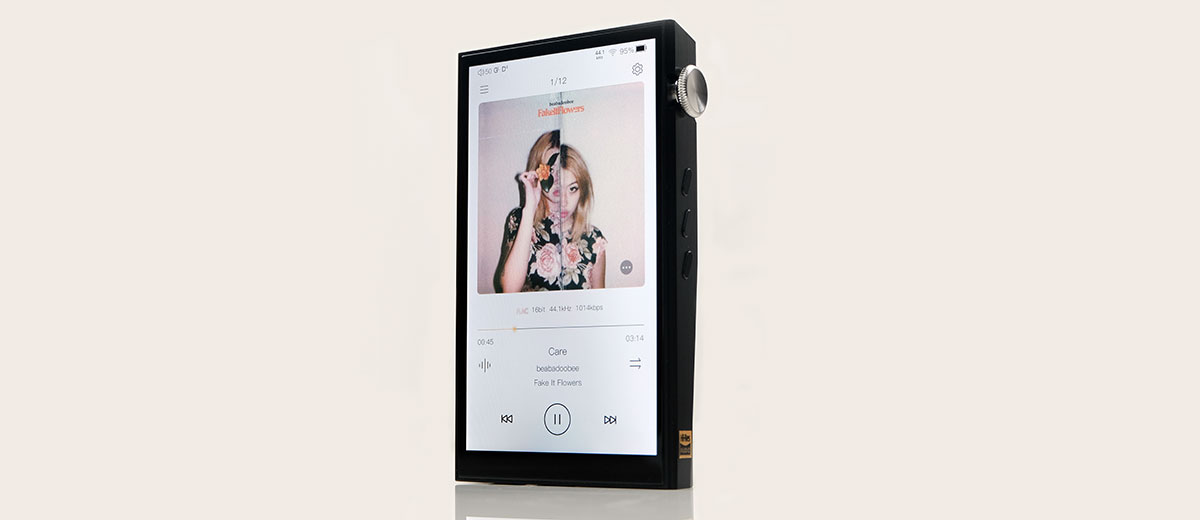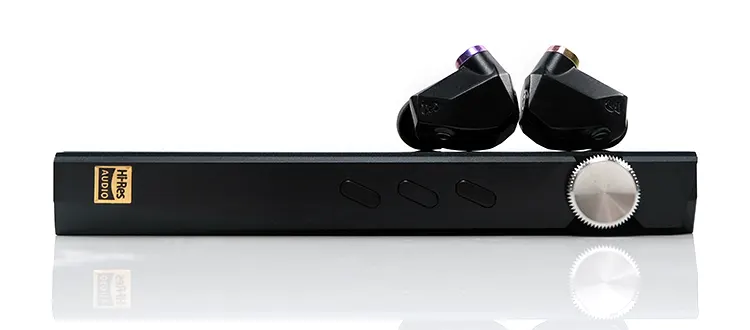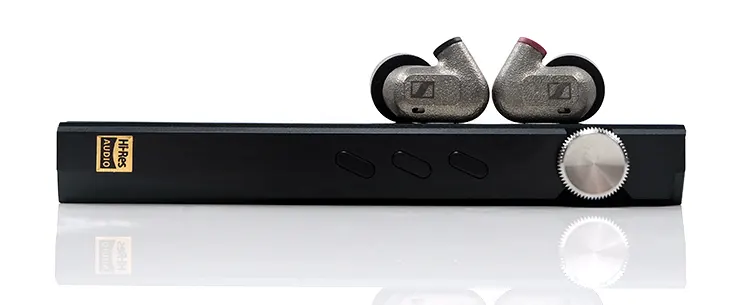Sound Impressions
The following sound impressions of the DX180 were completed using a mix of the Sennheiser IE 600, the Campfire Audio Fathom, and the THIEAUDIO Monarch MKIII, all in balanced output low gain mode.
Summary
The DX180 is a very competitive DAP at this price point. It has excellent dynamic range, a very black background, and enough power for both IEM and a wide range of headphones.
It also delivers a tonal coloration that I find more refined and smoother sounding than my previous iBasso mid-fi dalliance, the DX160.
The upgrade to a Quad-DAC combined with the FPGA Master 2.0 signal processing also does a wonderful job enhancing the perceived resolution with superior note texture.
I get an impression of ‘more information’ in all aspects of the presentation but without it sounding overly digital and too analytical.
There is also a definite jump in the complexity of the layering and staging depth compared to the DX160. Everything sounds more 3-dimensional and less compressed than before with improved instrumental and vocal separation giving the soundstage a very immersive quality.
The DX180 is still not what I would describe as a heavy-handed sub-bass performer compared to competitors such as the weighty HiBy R5 Gen 2. Rather the slam and ‘wow-factor’ come from a tighter-sounding, rapier-like mid-bass punch that gels beautifully with dynamic rivers.
IEMs such as the Monarch MKIII and the Softears Twilight can thus sound smooth and natural in their coloration through the mids and the highs but the lows still deliver an excellent sense of rhythm when called upon without sounding too slow or muddy.
Coloration
In my DX160 review, I noted that iBasso was embarking on a quest of sorts to bring a more natural flair to the DAP sound signatures.
The DX180 continues that legacy. In some ways, it reminds me of the DX300‘s quad CS43198 DAC tuning with a much smoother tonal profile, and perhaps slightly warmer or at least more liquid and natural-like performance when compared to the DX160.
The sub-bass weight is neutral compared to the heavier-sounding R5 Gen 2. At times the N3ULTRA’s Classic Tube timbre has a bit more sub-bass volume from the paired IEMs below 50Hz.
However, the bass fundamental is very sound with the DX180 more focused on delivering clean, well-layered mid-bass slam and a slight lift in bloom through the upper-bass and lower mids of the tested IEMs.
This creates a more physical coloration to the performance, one which I loved with hybrid IEMs rich in low-end body and texture. The only time I felt the bloom was perhaps a bit unbalanced was with the Campfire Audio Fathom.
It may well just be personal preference but I found myself digging into the Mango Player’s PEQ to shift the 200Hz region down by 2-3dB to create a more even balance and separation.
Of course, the fact you have such granular PEQ controls is a testament to how flexible the DX180 is for fine-tuning your gear coloration.
I didn’t get an impression of too much treble sharpness from the DX180 either. That should not be interpreted as relaxed-sounding but it’s not as sparkling as their higher-end models such as the DX320.
For IEMs such as the IE 600, the treble is a fine balance on the upper-mid harmonics. The sibilance felt natural rather than underplayed whereas on the DX160 the overtones were much sharper sounding.
Staging & Dynamics
This is the calling card for me with the DX180, at least when compared to the DX160 and some of the competition. Only the N3ULTRA matches it for staging prowess at this level and even then, I find it to be more of a macro-staging performer rather than mimic the DX180’s intricate imaging capability.
You get a vastly improved holographic soundstage compared to the more compressed-sounding DX160. You will notice a well-defined space right away.
You also get a more open set of mids with tested IEMs compared to the R5 Gen 2, which is more vocal-focused with a softer reproduction of distant notes behind the singer.
It’s not huge depth, but rather beautifully defined depth with excellent layering. The dynamic range helps a lot here with the DX180 able to hit hard and fast then melt away much quicker than you might expect.
It does so without over-sharpening the highs which is even more impressive. There are no faux clarity or parlor tricks from an overly aggressive treble in an attempt to create a false perception of height.
Rather, it relies on its black background, fast transient response and excellent treble resolution then lets the paired IEM’s tuning complete the equation.
Filter Effects
I don’t normally talk about digital filters simply because I find the effect akin to finding a needle in a haystack and not a significant game changer for tonal shaping compared to PEQ.
However, in the case of the DX180, the filters are more noticeable and I did find myself with preferences.
With smoother IEM tunings I opted for the D3 short delay fast roll-off option which almost sounded like a mild v-shaped profile. It injected more contrast into the coloration and created a slightly stronger sub-bass and treble presence.
The D5 NOS was perhaps the most linear of the profiles with a slight touch of softness in its delivery and not as bombastic as the D3 profile. The D1 Fast Roll Off filter felt NOS-like in imaging only more neutral in its tone with a slightly leaner note weight.
The D2 Short Delay Slow Roll Off and the D4 Slow Roll Off filters sounded more like shifting the emphasis in the FR. The former produced a little more treble emphasis and the D4 filter offered more bloom and warmth on the lows.
Synergy
Noise Floor
Compared to the DX160, the DX180 delivers a blacker background and an improved level of dynamic range with all IEMs I tested in a low gain balanced output setting.
For more demanding IEMs such as the Sennheiser IE 600, I switched to a lower volume level on medium gain but the performance was just as composed.
With super sensitive IEMs from Campfire such as the Andromeda, you will have no concerns with faint waterfall hiss, we have come a very long way on this issue since the days of the DX150.
Since this is a digital volume control, the channel balancing from the DX180’s volume dial is excellent at low levels. Even in a high-gain mode using sensitive IEMs the increase in volume step by step did not feel overly aggressive.
Granted, I get a vibe that going from 1 to zero on the dial feels somewhat abrupt rather than the natural attenuation you get from analog potentiometers. However, the results speak for themselves with perfect silence on zero and a steady, linear rise step by step upwards using easy-to-drive IEMs such as the Campfire Audio Fathom.
Both PO outputs are around 1Ω or less at 1.1Ω balanced and 0.6Ω unbalanced so there should be no concerns about the potential for driver impedance skew from some IEMs.
IEM Pairings
I tested four IEM pairings with the DX180. They included the Campfire Audio Fathom, THIEAUDIO’s Monarch MKIII, the Sennheiser IE 600, and the Softears Twilight.
Of the five, the pure dynamic driver models were my preferred pairings. The DX180 creates a very punchy vibrant low-end with the IE 600 and the Twilight. Combined with the excellent dynamic range these dynamic drivers can sound physical in the lows but without any muddiness.
Of these two, the Twilight has the better balance with the DX180. The IE 600 can have a slightly sharper overtone on the upper-mids though not a deal breaker with the DX180’s PEQ able to just dampen it down if you are sensitive to that.
As you will find out on page 3, the DX180 is not the most bass-heavy DAP out there. Rather, the calling card is the rapier-like mid-bass pace and punch that it produces from dynamic drivers.
Such is the case with the Monarch MKIII which sounds very physical and dynamic on the lows. Thankfully, the vocal presence balances out the bass punch quite nicely.
The DX180’s ability to create some welcome space and midrange separation suits this monitor’s tuning though I find the Twilight to offer a more soothing treble balance without PEQ.
The Fathom/DX180 pairing didn’t create the right balance for my tastes, initially. The upper bass and lower mids seemed a bit too pushed with slightly less air in the highs than I would have expected.
PEQ did help though. With a setting of – 3db at 200Hz and a Q factor of 0.9 using a peaking filter I was able to cut a bit of the bass bloom out of the performance giving the sound a more balanced tonal quality.
Headphone Pairings
The DX180 maximum rated output is now at 690mW into a 32Ω load going balanced dropping down to 281mW single-ended on the same load using a high gain setting.
Compared to the DX160 there is a 0.4V drop from 6.4Vrms to 6Vrms going balanced that slightly diminishes higher impedance headphones handling and dropping from 135mW to 120mW for 300Ω loads.
Conversely, there is an increase in current capacity suited to powering lower impedance or impedance-agnostic headphones such as planars.
Based on the above changes I used the DX180’s balanced output to test high-impedance dynamic driver headphones including the 150Ω Sennheiser HD 620S and lower impedance relatively efficient planars such as the Meze Audio Liric II and the Audeze MM-500.
With the HD 620S, the DX180 is a more satisfying pairing when compared to the DX160 despite the slight drop in voltage output. It delivers a smoother fuller sound on the lows, more 3-dimensional imaging through the mids and highs, and with a more refined and detailed quality to the note texture.
The DX160 sounds more constricted for staging depth and slightly rougher around the edges, particularly on vocal timbre with sharper treble overtones from the HD 620S.
The above description is a consistent theme with the planar headphones, perhaps more so with the better current capacity from the DX180.
Both the MM-500 and the Liric sounded more natural and holographic with the DX180 when A/B’ing with the DX160. The MM-500’s mid-forward tuning in particular benefited from the smoother and more spacious sound of the DX180’s output.





